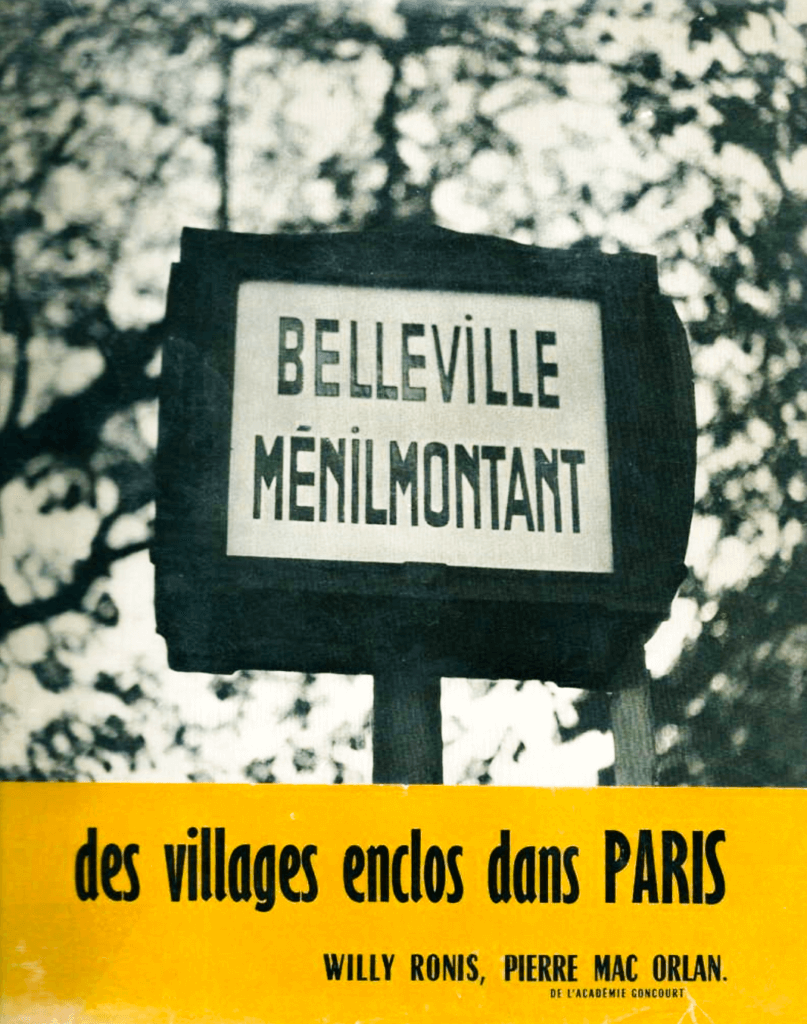

In 1954, French humanist photographer Willy Ronis published an important book entitled Belleville Menilmontant: Les Fruits du Hasard (The Fruits of Chance) with a text by Pierre Mac Orlan. The photographs he made in the 20th Arrondissement of Paris where the villages of Belleville and Menilmontant are situated, recorded the post war daily life of inhabitants. It was a time when there were frequent blackouts and very few cars on the streets.
Willy “took affection” for the area when his wife, a painter, was invited by an artist friend to dinner in Belleville. He returned often to make photographs and the work was ultimately published in his book by Editions Arthaud. Initially it wasn’t a huge success, however it was reprinted later, in the 70s and was a popular success, resulting in many further iterations.
I remember as a kid, seeing a film entitled Le Ballon Rouge, directed by Albert Lamorisse (1956) in which a young boy was followed through his neighborhood by a red balloon (the only color in the film), and was mesmerized by the background images of Belleville & Menilmontant. I felt as though he had lived there in a previous life. Fast forward to the mid-80s when I edited and published Collectors Photography magazine and sought out Willy to present a portfolio of his work. We became close friends and over the years I would talk to WIlly about the two villages, the subject of his early great monograph.
One day I said to Willy, “I’d love to wander around Bellville and Menilmontant with you.” WIlly instantly replied, “Anytime you like.” We agreed to meet later in the week and stroll around the streets that had so fascinated me in my youth. The following day, I called Willy and said “I’d like to bring my video camera with me” and Willy assured me that would be fine. Having Willy’s immediate approval of the plan, I began to think I would be missing an important opportunity if I only recorded it using my personal 1990s VHS video camera and reached out to associates who suggested a cameraman who was an accomplished Director of Photography but also a fan of Willy’s. One thing quickly led to another and on the appointed date, me, my cameraman Samy and a sound engineer arrived at the apartment that Willy lived in near the Porte de Vincennes in Paris. To our utter amazement, Willy had prepared a complete itinerary and wasn’t at all surprised to see the film crew. Willy had trusted that I would come up with a serious solution.
We spent the day filming on 3/4″ video tape, then a year later, when the era of digital filming had arrived, worked for two more days on the project. After another 6 months, we collected WIlly and went to a professional production facility to add his wonderful photographs to the film.
The finished 26-minute documentary film was shown at his major 1996 retrospective ’70 ans de Déclics’ at the prestigious Pavillon des Arts in Paris, the year the film was completed.
It has never been shown agin until now.




